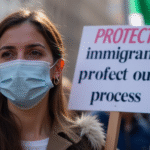Background on the Water Crisis in Mexico City
In 2024, Mexico City faced one of its worst water crises in decades due to severe drought affecting the Cutzamala system, a primary water source for the Mexico City Metropolitan Valley.
Although the city did not reach the “Día Cero” where it would have run out of available water for its residents, the threat was real. As of 2025, thanks to recent rains and better resource management, the Cutzamala levels have started to recover, though still partially.
Progress and Challenges
Víctor Javier Bourguett Ortiz, the executive director of Agua Potable from the Secretaría de Gestión Integral del Agua de la Ciudad de México (Segiagua), explained that in previous years, especially between 2014 and 2018, the Cutzamala system even experienced overflows due to its high water levels. However, excessive extractions and prolonged drought caused a drastic reduction in its reserves.
Following operational adjustments and recent rains, the system’s level has begun to improve. As of May 22, 2025, the storage reported was 379.3 million cubic meters, representing 49% of its capacity—a significant improvement compared to the previous year.
“2025 and possibly 2026 will still be challenging, though not as severe as 2024. We have not yet escaped the complicated situation, so we must continue with responsible water supply management and advance actions to reduce Cutzamala dependency,” Bourguett Ortiz commented.
Increased Water Availability and Fewer Complaints
One clear indicator of improved water supply is the reduction in citizen complaints. According to Segiagua data, in 2023, up to 800 daily reports were filed for water shortages. Currently, the number has dropped to an average of 300, with some days seeing as few as 100 complaints.
This change relates to greater water availability. In June 2024, during the crisis, the total supply in Mexico City was 27.7 cubic meters per second. At that time, 50% of the water came from wells since Cutzamala only contributed 16% of the resource.
By May of this year, the situation had changed: the average supply rose to 30 cubic meters per second with better distribution among sources. Cutzamala’s participation increased to 29.2%, while wells dropped to 41.4%.
“We were far from reaching Día Cero, but the discourse became politicized. Our strategy to tackle scarcity was to increase well extraction and diversify sources,” said the Segiagua director.
Infrastructure and Coordination
Despite the recovery, experts agree that the real challenge lies in ensuring a sustainable and equitable water system.
Mauricio Jessurun, president of the XL Board of Directors of the Mexican Civil Engineers College (CICM), warned that managing hydrology in large cities like Mexico City is one of the most complex challenges.
“In the capital, the challenge multiplies as it must supply more than 2.8 million residences and sustain its economic activity, which accounts for over 16% of the national GDP,” Jessurun detailed.
For Bourguett, the city’s primary water source in the future will be efficiency—recovering water from leaky infrastructure. Currently, an estimated 35% of potable water is lost due to leaks caused by deteriorating infrastructure.
To reverse this, Mexico City authorities are promoting rehabilitation projects for pumping plants, wells, control and measurement systems, and wetlands. They are also coordinating with the states of Mexico and Hidalgo to incorporate new sources like the Guadalupe dam or Tequixquiac wells.
Key Questions and Answers
- What was the water crisis in Mexico City caused by? The crisis was primarily due to severe drought affecting the Cutzamala system, a primary water source for Mexico City.
- How has the water situation improved in 2025? Thanks to recent rains and better resource management, the Cutzamala levels have started to recover, with storage increasing to 49% of its capacity.
- What are the main challenges for Mexico City’s water supply? The primary challenge is ensuring a sustainable and equitable water system, considering the need to supply over 2.8 million residences and sustain a significant portion of the national GDP.
- What percentage of potable water is lost due to leaks? An estimated 35% of potable water is lost because of leaks caused by deteriorating infrastructure.
- What projects are being promoted to improve the water situation? Mexico City authorities are promoting rehabilitation projects for pumping plants, wells, control and measurement systems, and wetlands. They are also coordinating with neighboring states to incorporate new water sources.






